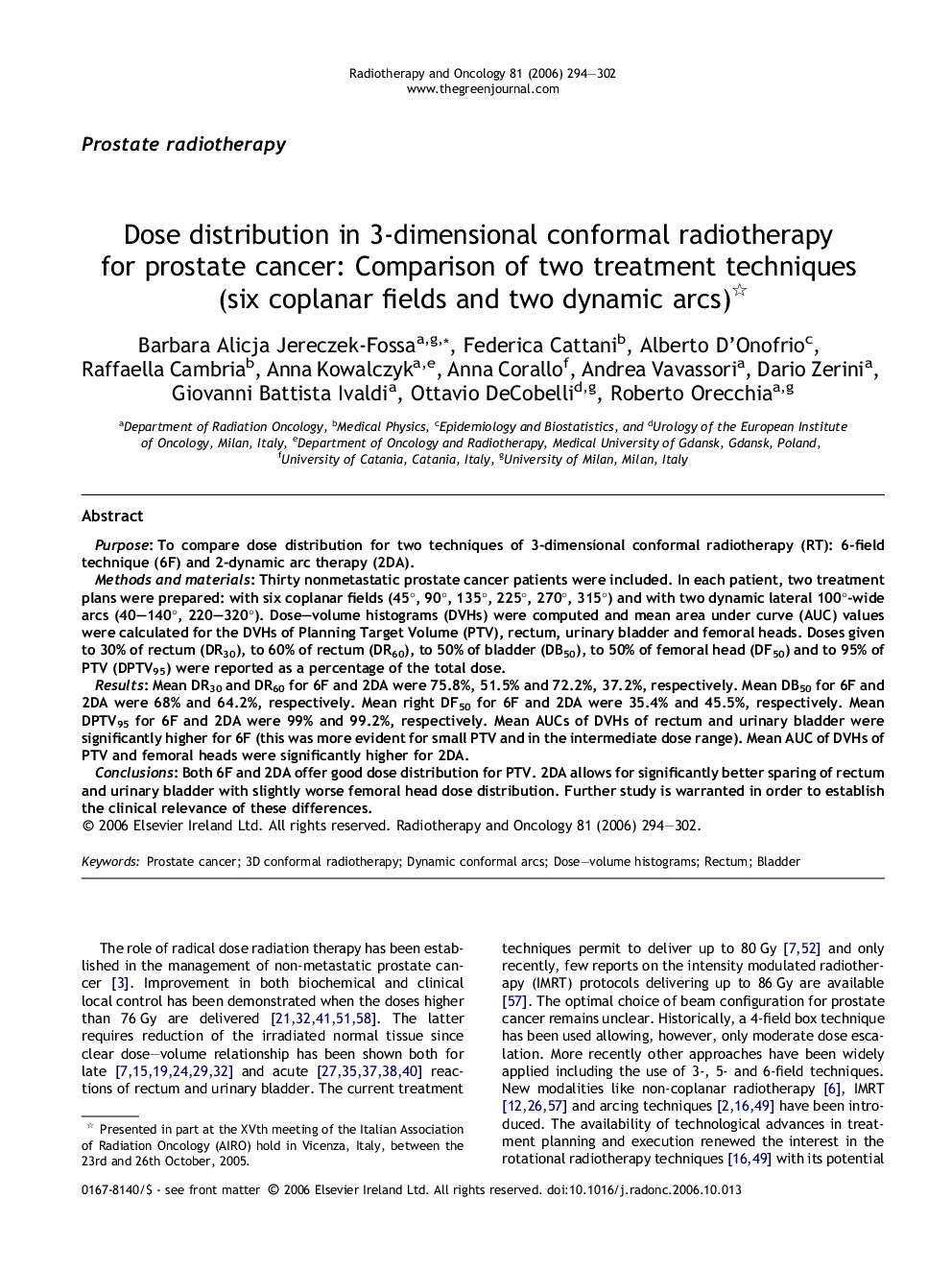| Article ID | Journal | Published Year | Pages | File Type |
|---|---|---|---|---|
| 2161162 | Radiotherapy and Oncology | 2006 | 9 Pages |
PurposeTo compare dose distribution for two techniques of 3-dimensional conformal radiotherapy (RT): 6-field technique (6F) and 2-dynamic arc therapy (2DA).Methods and materialsThirty nonmetastatic prostate cancer patients were included. In each patient, two treatment plans were prepared: with six coplanar fields (45°, 90°, 135°, 225°, 270°, 315°) and with two dynamic lateral 100°-wide arcs (40–140°, 220–320°). Dose–volume histograms (DVHs) were computed and mean area under curve (AUC) values were calculated for the DVHs of Planning Target Volume (PTV), rectum, urinary bladder and femoral heads. Doses given to 30% of rectum (DR30), to 60% of rectum (DR60), to 50% of bladder (DB50), to 50% of femoral head (DF50) and to 95% of PTV (DPTV95) were reported as a percentage of the total dose.ResultsMean DR30 and DR60 for 6F and 2DA were 75.8%, 51.5% and 72.2%, 37.2%, respectively. Mean DB50 for 6F and 2DA were 68% and 64.2%, respectively. Mean right DF50 for 6F and 2DA were 35.4% and 45.5%, respectively. Mean DPTV95 for 6F and 2DA were 99% and 99.2%, respectively. Mean AUCs of DVHs of rectum and urinary bladder were significantly higher for 6F (this was more evident for small PTV and in the intermediate dose range). Mean AUC of DVHs of PTV and femoral heads were significantly higher for 2DA.ConclusionsBoth 6F and 2DA offer good dose distribution for PTV. 2DA allows for significantly better sparing of rectum and urinary bladder with slightly worse femoral head dose distribution. Further study is warranted in order to establish the clinical relevance of these differences.
